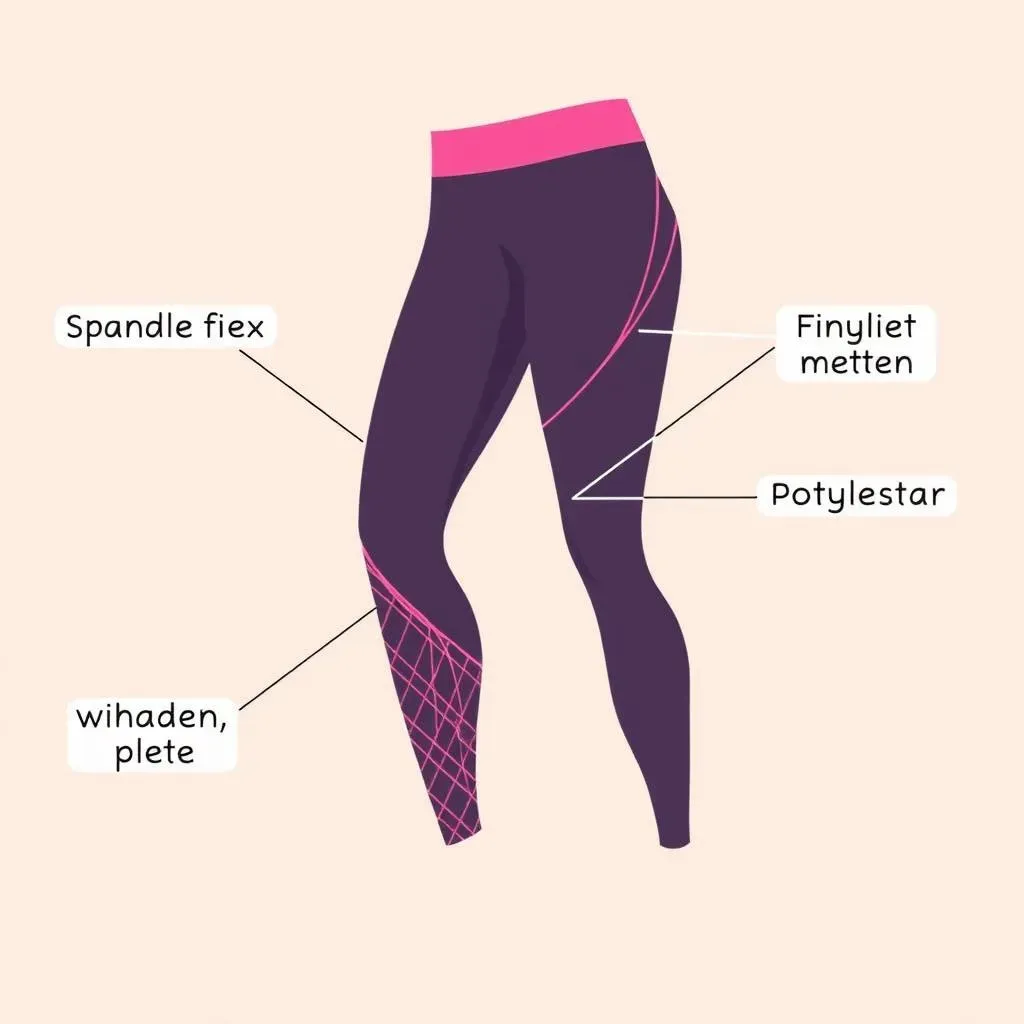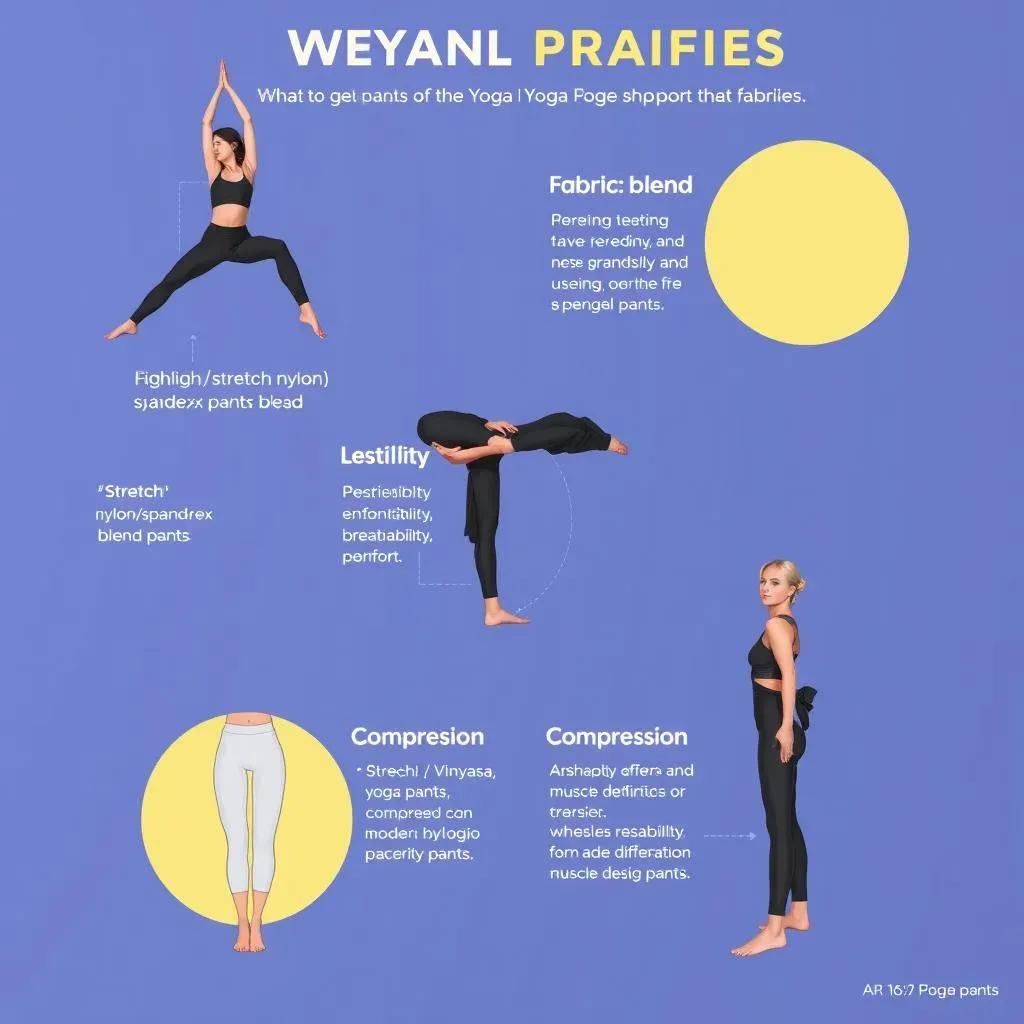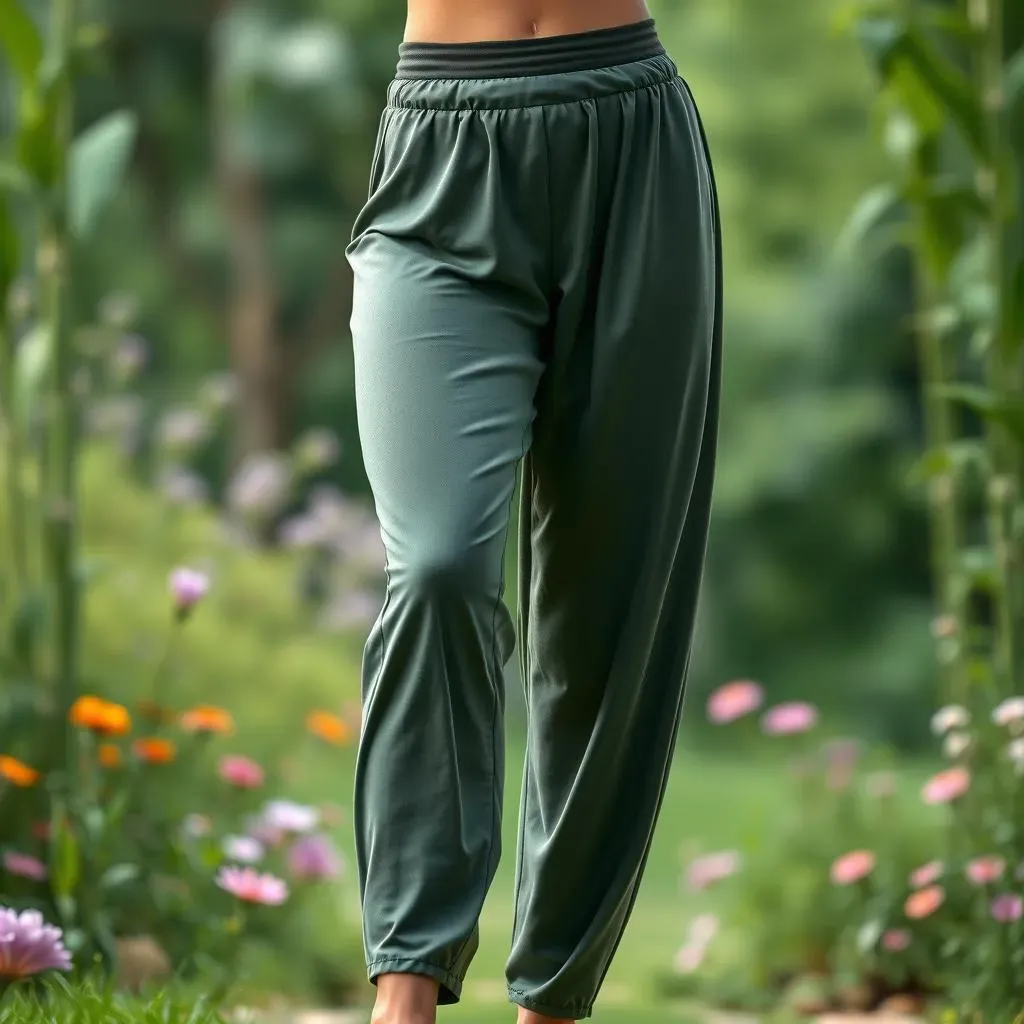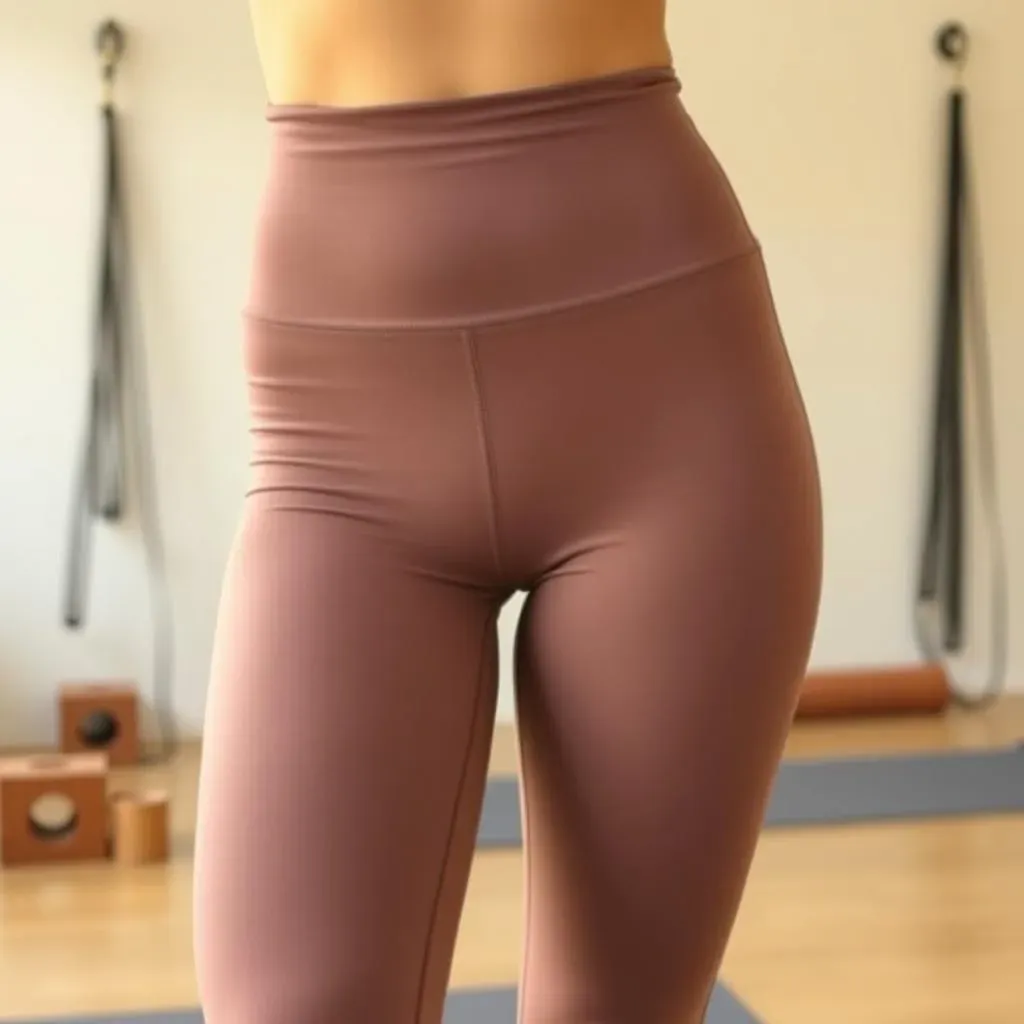Table of Contents
Ever wondered what makes those super comfy yoga pants so…super comfy? We're diving deep into the world of stretchy fabrics and stylish designs to answer the burning question: what are yoga pants made of? This article isn't just about the materials; it's about understanding how those materials impact your workout, your comfort, and even the planet. We'll explore the most common fabrics used in yoga pants, from the classic blends of nylon and spandex to more sustainable and innovative options. We'll also examine how different fabrics affect things like moisture-wicking, breathability, and durability, helping you choose the perfect pair for your yoga style and activity level. Finally, we'll touch upon the ethical and environmental considerations related to yoga pant production, because being comfortable shouldn't come at the cost of the environment. Get ready to become a yoga pant expert! Let's unravel the secrets of this incredibly popular piece of athletic wear, one thread at a time.
The Main Materials: What are Yoga Pants Made Of?

The Main Materials: What are Yoga Pants Made Of?
Spandex: The Stretch Star
Let's talk spandex, the superhero of stretchy fabrics! Also known as Lycra or elastane, spandex is the secret ingredient that gives yoga pants their incredible flexibility. It's a synthetic fiber, meaning it's made from chemicals, not natural materials like cotton. Think of it as the invisible muscle in your yoga pants, allowing for a full range of motion whether you're doing downward-facing dog or just chilling on the couch. Without spandex, your yoga pants would be stiff and restrictive, like trying to do yoga in cardboard boxes!
Because of its amazing stretching ability, spandex is usually blended with other fibers to create the perfect yoga pant fabric. It's rarely used on its own because it can be a bit too clingy. We'll explore those blends in more detail later, but for now, just remember that spandex is the backbone of most yoga pants' stretchiness. Want to learn more about different types of yoga pants? Check out our guide on yoga pants vs leggings.
Fabric | Stretch | Breathability |
|---|---|---|
100% Spandex | Excellent | Poor |
Spandex Blend (e.g., 80% Nylon, 20% Spandex) | Good | Moderate |
Nylon and Polyester: The Durable Duo
Nylon and polyester are often the other key players in yoga pant fabrics. These are both synthetic fibers known for their durability and moisture-wicking capabilities. Nylon is strong and resistant to stretching out over time, keeping your pants looking great, even after many washes and many downward dogs. Polyester is excellent at pulling moisture away from your skin, keeping you dry and comfortable during intense workouts. Think of them as the supportive sidekicks to spandex's star power.
Many yoga pants use a blend of nylon and polyester, often combined with spandex for the perfect balance of stretch, durability, and moisture-wicking. The exact percentages of each fiber vary depending on the brand and style of the yoga pants. Some brands even use innovative blends that include things like bamboo or recycled materials. To explore different styling options, check out our article on styling black yoga pants. It's all about finding the right blend for your preferences!
- Nylon: Strong, durable, resistant to wrinkles
- Polyester: Moisture-wicking, quick-drying, affordable
- Blends: Combine the best qualities of both fibers
Beyond the Basics: Exploring Different Yoga Pant Fabrics

Beyond the Basics: Exploring Different Yoga Pant Fabrics
Beyond the Basics: Exploring Different Yoga Pant Fabrics
Cotton: The Natural Choice
While synthetic fabrics dominate the yoga pant market, cotton still holds a place for those who prefer natural fibers. Pure cotton yoga pants offer a soft, breathable feel, perfect for gentler yoga styles or everyday wear. However, they're not as moisture-wicking or durable as synthetic blends. Think of them as the cozy, comfortable friend you want to hang out with on a relaxing Sunday. They might not be up for a strenuous hike, but they're perfect for lounging around the house.
Cotton's breathability makes it ideal for warmer climates or low-impact activities, but its lack of stretch and tendency to wrinkle can be drawbacks for intense workouts. Many brands now offer cotton blends that combine the best of both worlds—the softness of cotton with the stretch of spandex or the durability of nylon. Want to know more about dyeing your leggings? Check out our guide on dyeing leggings black.
- Pros: Soft, breathable, natural
- Cons: Not as stretchy, can wrinkle easily, less durable
Bamboo: The Eco-Friendly Option
Bamboo fabric is becoming increasingly popular in yoga pants due to its eco-friendly nature and soft, luxurious feel. Bamboo is a rapidly renewable resource, requiring less water and pesticides than cotton. It's also naturally breathable and moisture-wicking, making it a great choice for those who want both comfort and sustainability. Think of bamboo yoga pants as the stylish, eco-conscious friend who always makes the right choices.
However, bamboo fabric can be more expensive than other options, and its durability can vary depending on the manufacturing process. It’s important to check the care instructions to ensure the longevity of your bamboo yoga pants. Looking for a casual way to style your yoga pants? Check out our suggestions on wearing yoga pants casually.
Fabric | Sustainability | Softness |
|---|---|---|
Cotton | Moderate | High |
Bamboo | High | High |
Polyester | Low | Moderate |
Merino Wool: The High-Performance Natural
For those seeking a natural fiber with high-performance qualities, merino wool is a fantastic option. Merino wool is incredibly soft, breathable, and naturally odor-resistant. It's also moisture-wicking and temperature-regulating, making it suitable for a wide range of climates and activities. Think of merino wool as the sophisticated, athletic friend who excels at everything they do.
While merino wool yoga pants are a premium choice, they offer unparalleled comfort and performance. Their natural odor-resistance means you can wear them for multiple workouts before washing, reducing laundry and making them ideal for travel. However, they are more expensive than other fabrics and require specific care instructions to maintain their quality. Learn more about the differences between yoga pants and leggings in our article on yoga pants vs leggings.
"Merino wool yoga pants are a luxurious choice for those who value comfort, sustainability, and performance." - Anonymous Yoga Enthusiast
Finding the Perfect Fit: How Fabric Affects Yoga Pant Performance

Finding the Perfect Fit: How Fabric Affects Yoga Pant Performance
Stretch and Recovery: Finding Your Perfect Fit
The most crucial aspect of yoga pants is their ability to stretch and recover. This is where spandex plays its starring role. A higher percentage of spandex means more stretch, allowing for a wider range of motion during poses like forward folds and lunges. However, too much spandex can lead to a clingy feel that some find uncomfortable. The ideal balance is often achieved through blends, combining the stretch of spandex with the durability and support of nylon or polyester.
Consider the type of yoga you practice. For dynamic styles like Vinyasa or Ashtanga, you'll want pants with excellent stretch and recovery. Restorative or Yin yoga might allow for less stretchy fabrics, prioritizing comfort and a relaxed fit. Want to explore different styling options for your yoga pants? Our article on styling black yoga pants offers some great ideas!
Yoga Style | Ideal Stretch | Fabric Recommendation |
|---|---|---|
Vinyasa | High | Nylon/Spandex blend |
Restorative | Moderate | Cotton/Spandex blend |
Breathability and Moisture-Wicking: Staying Cool and Dry
Breathability and moisture-wicking are key for comfort during intense workouts. Synthetic fabrics like nylon and polyester excel in this area, pulling sweat away from the skin and allowing for better airflow. This helps to regulate body temperature and prevent overheating, keeping you comfortable even during challenging poses. Natural fibers like cotton and bamboo also offer breathability but may not be as effective at wicking moisture.
Think about your climate and workout intensity. In warmer climates or during vigorous practices, prioritize moisture-wicking fabrics. For cooler environments or gentler yoga styles, breathability may be more important than extreme moisture-wicking. Considering dyeing your pants? Check out our comprehensive guide on dyeing pants black for helpful tips and tricks.
- High Breathability: Bamboo, Cotton blends
- High Moisture-Wicking: Nylon, Polyester blends
- Balance of Both: Many modern blends
Compression and Support: Enhancing Performance
Some yoga pants offer compression, providing a supportive feel that can enhance performance and reduce muscle fatigue. Compression fabrics often contain a higher percentage of nylon or other supportive fibers. This snug fit can also improve blood circulation and reduce muscle soreness after a workout. However, excessive compression can be restrictive for some people, so it's important to find the right level of support for your body and preferences.
Consider your personal preferences and the type of yoga you practice. If you prefer a more supportive feel, compression yoga pants might be a great option. For those who prefer a looser fit, opt for less compressive fabrics. If you're still unsure about the differences between yoga pants and leggings, our article on yoga pants vs leggings provides a detailed comparison.
"The right yoga pants should feel like a second skin, providing support without restriction." - Experienced Yoga Instructor
Sustainability and Ethics: What are Yoga Pants Made Of and Their Environmental Impact?

Sustainability and Ethics: What are Yoga Pants Made Of and Their Environmental Impact?
The Environmental Footprint of Yoga Pants
Let's be real, the yoga pant industry isn't exactly known for its eco-friendly practices. Many yoga pants are made from synthetic fibers like polyester and nylon, which are derived from petroleum—a non-renewable resource. The production of these fibers involves energy-intensive processes and can release harmful pollutants into the air and water. Plus, the disposal of these synthetic fabrics contributes to landfill waste and microplastic pollution in our oceans. It's a bit of a bummer, right? But don't despair—there's hope!
Thankfully, many brands are now focusing on more sustainable materials and production methods. Look for yoga pants made from recycled materials, organic cotton, or bamboo. These options reduce the environmental impact compared to traditional synthetic fabrics. Choosing sustainable brands supports ethical practices and helps protect our planet. Want to know more about the differences between yoga pants and leggings? Check out our helpful guide on yoga pants vs leggings.
Material | Sustainability Rating | Environmental Impact |
|---|---|---|
Polyester | Low | High (petroleum-based, microplastic pollution) |
Organic Cotton | Moderate | Lower (renewable resource, but still requires water and pesticides) |
Bamboo | High | Low (rapidly renewable, requires less water and pesticides than cotton) |
Ethical Considerations in Yoga Pant Production
Beyond the environmental impact, it's also important to consider the ethical aspects of yoga pant production. Fair labor practices and safe working conditions are crucial. Look for brands that are transparent about their supply chains and ensure fair wages and safe working environments for their workers. Supporting ethical brands helps ensure that the people who make your yoga pants are treated fairly and with respect.
Many consumers are now prioritizing ethical and sustainable brands. This growing demand is pushing the industry towards more responsible practices. By making conscious choices about the yoga pants you buy, you can support brands that prioritize both people and the planet. Interested in styling your black yoga pants? Our article on styling black yoga pants has some great ideas.
- Look for certifications like GOTS (Global Organic Textile Standard) or Fair Trade.
- Read brand transparency reports about their supply chains.
- Support brands committed to ethical labor practices.
